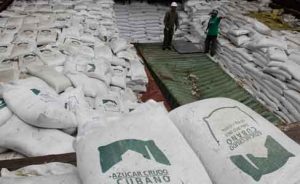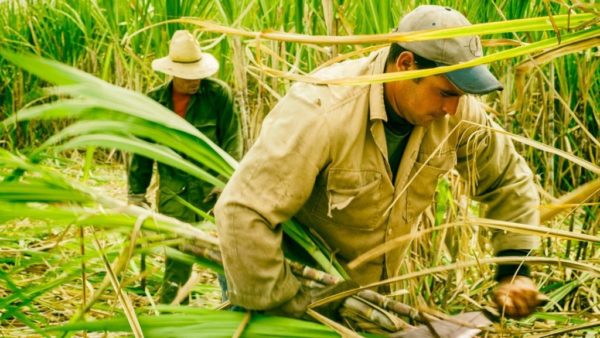Cuba’s Worst Sugar Harvest

Recent figures from the government’s AzCuba Business Group indicate that they were only able to meet 52% of the planned 2021-2022 harvest target.
HAVANA TIMES – The Cuban sugar harvest ended this year with less than half a million tons, in a steep drop as this industry has dwindled over the past five years. The report paints a bleak picture for the sector’s recovery plans.
The harvest last year, that ended with 800,000 tons, was classified as the worst one since 1908. Now the new low was even much worse.
Last week, Information and Communications director at AzCuba Business Group, Dionis Perez, announced that this industry only met 52% of its production targets in the 2021-2022 season. The target stood at 911,000 tons according to the national plan, which was presented by the Ministry of Economy and Planning at the end of the year.
Judging by the preliminary statistics from the end of the harvest, Cuban sugar production stood at just over 470,000 tons this year. Even though the Government immediately announced that they have enough to guarantee sugar rations to the population – national consumption is estimated at 500,000 tons -, there won’t be any left over for exporting; 411,000 tons for export were to bring in 153 million USD in revenue.
In statements to the Cuban press, Perez reported that only three of the 35 sugar mills taking part in the sugar harvest met their targets: Melanio Hernandez, in the province of Sancti Spíritus; 14 de Julio, in Cienfuegos, and the Boris Luis Santa Coloma, in Mayabeque.
Reasons for the decline
Shortages of basic farm supplies for the sugar industry severely affected results. Firsly, shortages of sugar cane. Therefore raw material at sugar mills was limited because of the awful yield from sown fields.
Perez admitted that low agricultural yields meant that 42% of harvested areas yielded less than 30 tons per hectare.
Fertilizers and weed-killers for sugar cane crops were among the supplies that production suffered limited access because the State lacked foreign currency to import these supplies, as a result of the economic crisis that went hand-in-hand with the COVID-19 pandemic. Only 37% of these crops had their needs met for both resources, according to AzCuba.

Recovery programs were launched in the country, developing alternatives such as biofertilizers made in Cuba which weren’t enough to compensate the import deficit.
The 2021-2022 sugar harvest confirms initial reports that spoke badly about the course Cuban sugar production was taking this year, exacerbating the decline the sector’s seen since 2017. A slight recovery had been seen up until this year, which increased sugar cane yields to 43 tons per hectare, up from 26 tons recorded in 2010. But it’s been dropping ever since.
There was a little breathing space this year despite the tough situation with shortages. When the production plant broke down and stepped-up tensions during the pandemic, the sugar industry also ran out of oxygen. Sugar mills had to delay the milling process by 12 days as a direct consequence of this.
The AzCuba representative admitted there were organizational problems, but he passed on a significant part of the blame to the obstacles placed by the US’ economic blockade, which directly impacted the country’s ability to acquire resources for repairing and maintaining machinery, transport, and the industry, he said.
Delays or shortages of fuel in several provinces, in addition to rains out of season in sugar cane lands also joined the problems of an already evidently weak sugar harvest.





